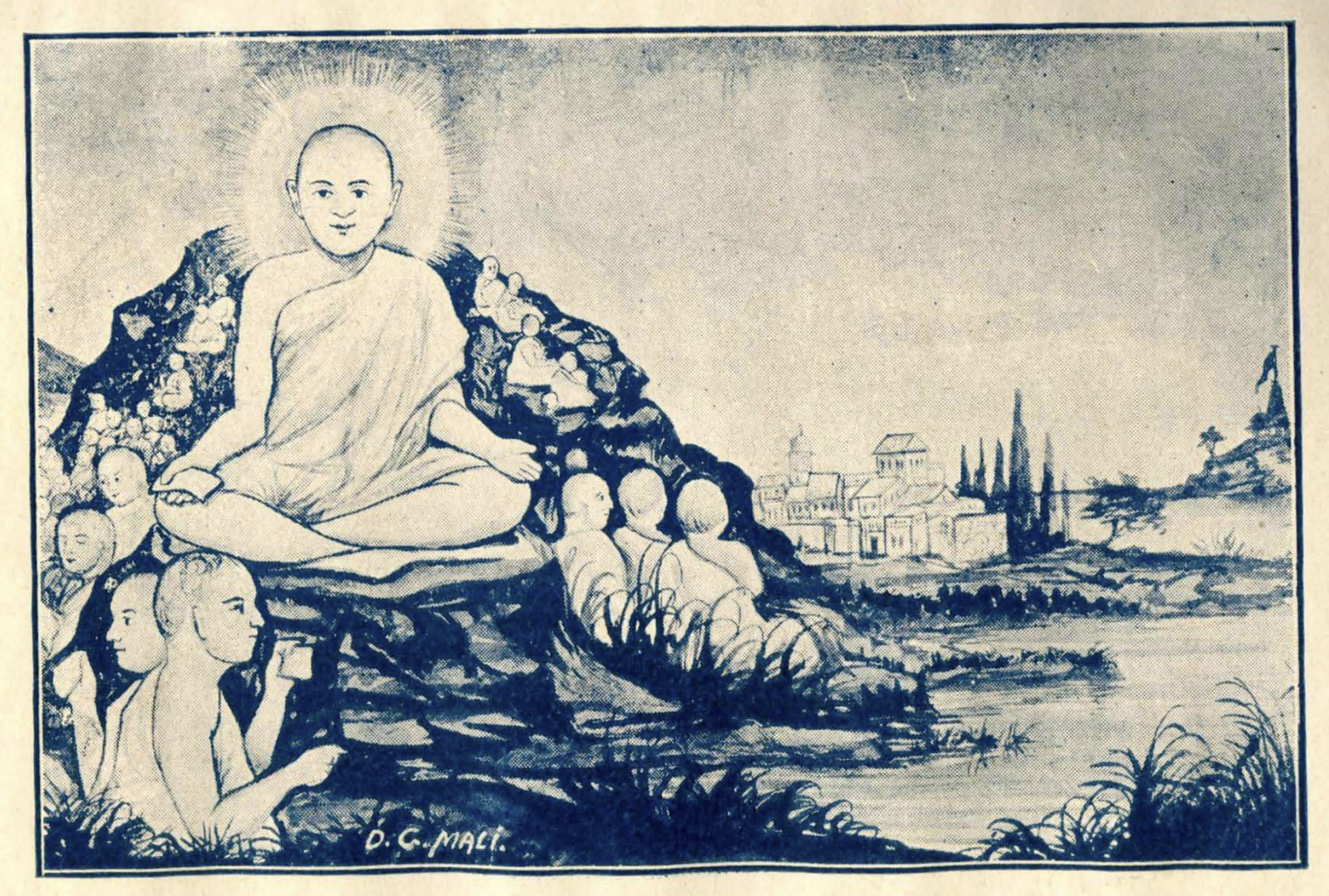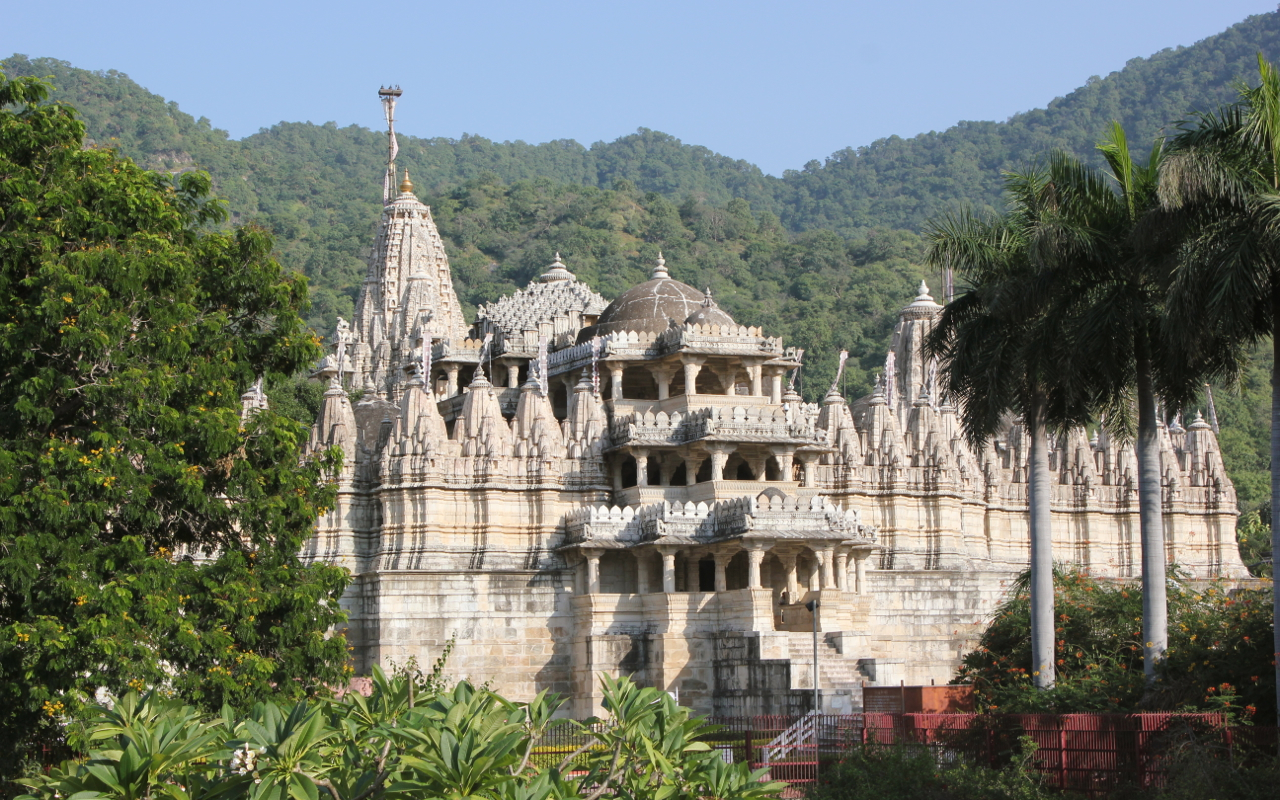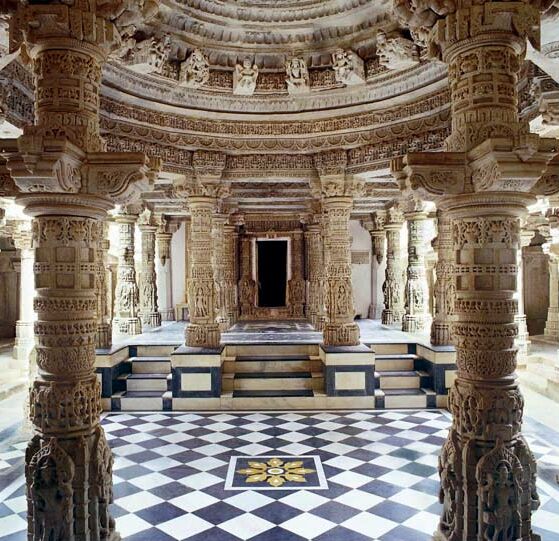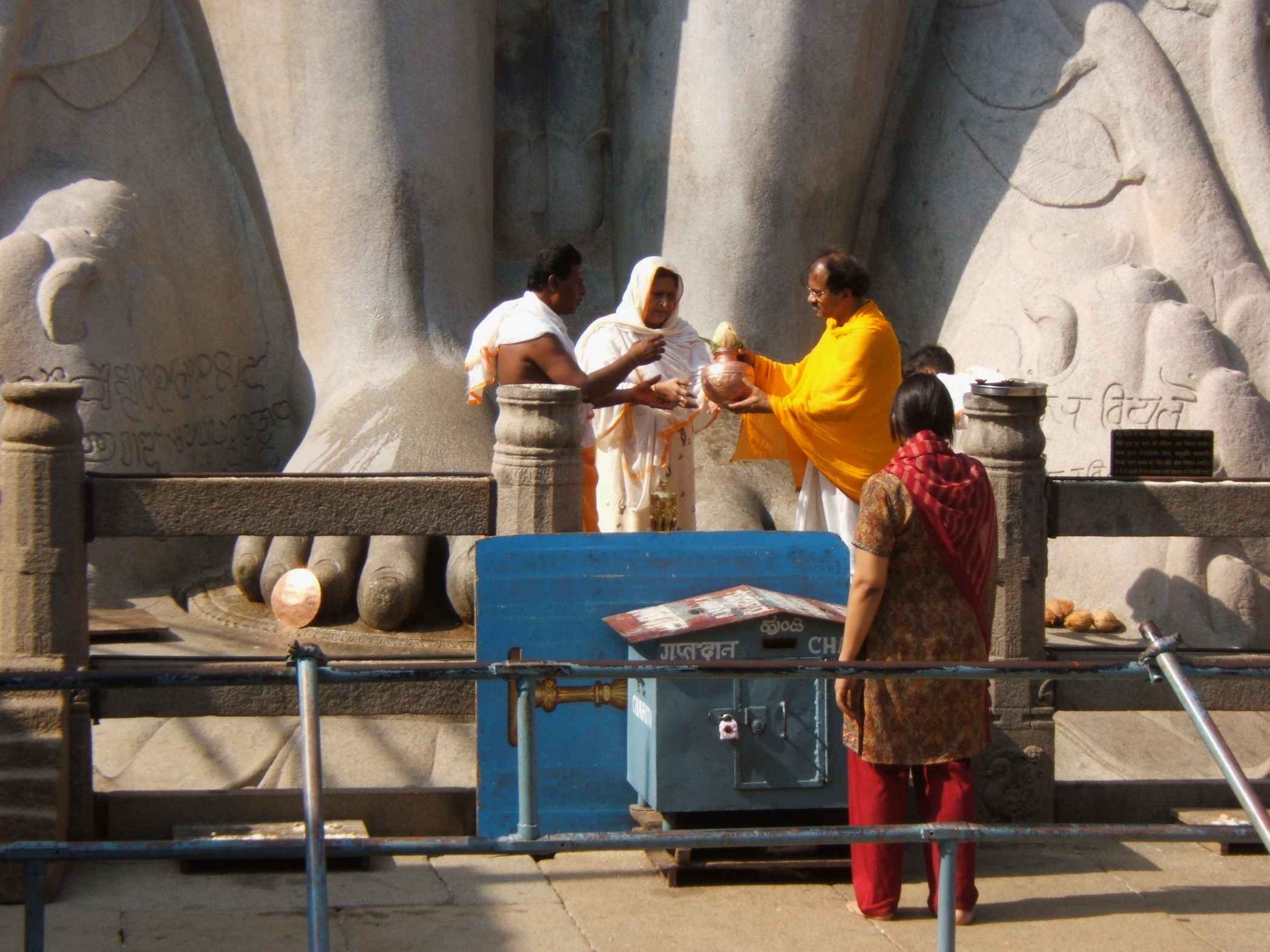|
Ratnaprabhasuri At Lunaadri Hill
Ratnaprabhasuri was a Śvetāmbara Jain ascetic and the 6th successor in the lineage of the monastic heads of the ''Chaturvidha Sangha's'' () Upkeśa Gaccha. He succeeded Swayamprabhasuri and is believed to have existed in 6th–5th century BC. He is most well-known as the founder of the ''Oswāl'' clan of Śvetāmbara Jains. Birth and initiation As per scriptures of the Śvetāmbara sect, he is believed to have been born in the 5th century BC in a royal family belonging to the ''Vidyādhara'' clan as ''Prince Ratnachuda''. Later on, he became a ''Vidyādhara'' king. As a member of the ''Vidyādhara'' clan, he is said to have possessed several ''vidyās'' (magical powers). Śvetāmbara scriptures have vivid descriptions of ''Vidyādhara'' kingdoms and legends about the magical powers possessed by the members of this clan. According to legends, Swayamprabhasuri was once preaching lay followers about renouncing and embracing monkhood, and ''King Ratnachuda'' was flying a ... [...More Info...] [...Related Items...] OR: [Wikipedia] [Google] [Baidu] |
Jainism
Jainism ( ), also known as Jain Dharma, is an Indian religions, Indian religion whose three main pillars are nonviolence (), asceticism (), and a rejection of all simplistic and one-sided views of truth and reality (). Jainism traces its spiritual ideas and history through the succession of twenty-four , supreme preachers of ''dharma''. The first in the current time cycle is Rishabhadeva, who tradition holds lived millions of years ago; the 23rd is Parshvanatha, traditionally dated to the 9th century Common Era, BCE; and the 24th is Mahāvīra, Mahavira, who lived . Jainism is considered an eternal ''dharma'' with the guiding every time cycle of the Jain cosmology, cosmology. Central to understanding Jain philosophy is the concept of ''bhedavijñāna'', or the clear distinction in the nature of the soul and non-soul entities. This principle underscores the innate purity and potential for liberation within every Jīva (Jainism), soul, distinct from the physical and menta ... [...More Info...] [...Related Items...] OR: [Wikipedia] [Google] [Baidu] |
Acharya (Jainism)
An ''Āchārya'' () is the leader of an order of Jain ascetics (Munis), termed a sangh in the Jain tradition. Some of the famous achāryas are Bhadrabahu, Sthulibhadra, Kundakunda, Samantabhadra (Jain monk), Samantabhadra, Umaswati, Acharya Haribhadrasuri, Haribhadra, Hemachandra. In the Namokar Mantra, the five panch-paramsthis include Acharyas, Upadhyayas and the ordinary Munis(Sadhus). The lineage (line of ordination) of Āchāryas goes back to Lord Mahavira Swami. After the Ganadharas (immediate disciples of Lord Mahavira), there was a lineage of Kevalis (ending with Jambuswami), who were succeeded by Shrutakevalin, Shruta-Kevalis. After the last Shruta-Kevali Bhadrabahu, two separate lineages of Acharyas emerged, a Digambar lineage and a Shvetambara lineage. Several lineages of the Acharyas exist in both sects. The lineages became Bhattaraka or Yati lineages when it became impossible for them to travel freely. Reforms during the British period restored the Acharya linea ... [...More Info...] [...Related Items...] OR: [Wikipedia] [Google] [Baidu] |
Porwal
Poravāla, correctly called Poravāḍa, is a Kshatriya community that originated in southern Rajasthan, India. They are mainly of Jain or Hindu faith. The name Poravāla was applied on the basis of the names of other Bania communities ( Osavāla, Agaravāla, Khaṇḍelavāla, etc.). The name Poravāḍa is derived from Prāgavaṭa. The caste is divided into 24 gotras. They are also divided into three sections (from highest to lowest status): Visā, Dasā and Pañcā Poravāḍas. According to tradition the Visā and Dasā divisions arose in the 13th century. The brothers Vastupāla and Tejapāla were the sons of Poravāḍa father and Śrīmāli mother. The Poravādas who chose to eat with the brothers became Dasā, and those who refused became Visā. The Visā and Dasā interdine but do not intermarry. The Visās tend to be Jain while Dasā's tend to be Vaishnav. Formerly interreligious marriages occurred between Jains and Vaishnavs of the same sub-caste. They originate ... [...More Info...] [...Related Items...] OR: [Wikipedia] [Google] [Baidu] |
Maru Pradesh
Maru Pradesh is a geographical, cultural, social, economic, political and linguistic region of the Thar Desert in the Northwest India. It is also a proposed state in India with its proposed capital being Bikaner, the Central city of Maru Pradesh. It would be carved out from the state of Rajasthan. The proposed state would consist the districts of Jalore, Balotra, Barmer, Sanchore, Sirohi, Didwana Kuchaman, Hanumangarh, Jaisalmer, Bikaner, Jhunjhunu, Jodhpur, Jodhpur Rural, Nagaur, Pali, Phalodi, Anupgarh, Sikar, Churu, Sri Ganganagar, Beawar. History When Rajasthan was being formed, Jodhpur and Bikaner states strongly opposed the merger of Rajasthan, and both states favoured creating a desert state. It is said that the then ruler of Jodhpur, Hanwant Singh, went to the first Lok Sabha wearing a black turban in protest against the merger into Rajasthan. Following this, in 1953, Pratap Singh, the former Minister of Bikaner State, protested against the merger of Ra ... [...More Info...] [...Related Items...] OR: [Wikipedia] [Google] [Baidu] |
Chakreshvari
In Jain cosmology, Chakeshvari or ''Apraticakra'' is the guardian goddess or Yakshini (attendant deity) of Rishabhanatha. She is the tutelary deity of the Sarawagi The Sarawagi or Saraogi or Sarawgi Jain community, meaning a Jain Śrāvaka, is also known as the Khandelwal. They originated from Khandela, a historical town in northern Rajasthan. The Sarawagi community owes its name to a strong historical ... Jain community. See also * Padmavati * Ambika Notes References * {{Jainism topics Jain minor deities Rishabhanatha ... [...More Info...] [...Related Items...] OR: [Wikipedia] [Google] [Baidu] |
Ratnaprabhasuri At Lunaadri Hill
Ratnaprabhasuri was a Śvetāmbara Jain ascetic and the 6th successor in the lineage of the monastic heads of the ''Chaturvidha Sangha's'' () Upkeśa Gaccha. He succeeded Swayamprabhasuri and is believed to have existed in 6th–5th century BC. He is most well-known as the founder of the ''Oswāl'' clan of Śvetāmbara Jains. Birth and initiation As per scriptures of the Śvetāmbara sect, he is believed to have been born in the 5th century BC in a royal family belonging to the ''Vidyādhara'' clan as ''Prince Ratnachuda''. Later on, he became a ''Vidyādhara'' king. As a member of the ''Vidyādhara'' clan, he is said to have possessed several ''vidyās'' (magical powers). Śvetāmbara scriptures have vivid descriptions of ''Vidyādhara'' kingdoms and legends about the magical powers possessed by the members of this clan. According to legends, Swayamprabhasuri was once preaching lay followers about renouncing and embracing monkhood, and ''King Ratnachuda'' was flying a ... [...More Info...] [...Related Items...] OR: [Wikipedia] [Google] [Baidu] |
Jodhpur
Jodhpur () is the second-largest city of the north-western Indian state of Rajasthan, after its capital Jaipur. As of 2023, the city has a population of 1.83 million. It serves as the administrative headquarters of the Jodhpur district and Jodhpur division. It is the historic capital of the Kingdom of Marwar, founded in 1459 by Rao Jodha, a Rajput chief of the Rathore clan. On 11 August 1947, 4 days prior to the Indian independence, Maharaja Hanwant Singh the last ruler of Jodhpur state signed the Instrument of Accession and merged his state in Union of India. On 30 March 1949, it became part of the newly formed state of Rajasthan, which was created after merging the states of the erstwhile Rajputana. Jodhpur is a famous tourist spot with a palace, fort, and temples, set in the stark landscape of the Thar Desert. It is also known as the 'Blue City' due to the dominant color scheme of its buildings in the old town. The old city circles the Mehrangarh Fort and is bou ... [...More Info...] [...Related Items...] OR: [Wikipedia] [Google] [Baidu] |
Mount Abu
Mount Abu (), known as Arbudgiri in Jain tradition, is a hill station in the Aravalli Range in the Sirohi district of the state of Rajasthan in western India. Here, the mountain forms a rocky plateau 22 km long by 9 km wide. It is referred to as 'an oasis in the desert' as its heights are home to rivers, lakes, waterfalls and evergreen forests. It is also home to numerous Jain and Hindu temples. History The ancient name of Mount Abu is Arbuda. In the Puranas, the region has been referred to as ''Arbudaranya'' ("forest of ''Arbuda''") and 'Abu' is a diminutive of this ancient name. It is believed that sage Vashistha retired to the southern spur at Mount Abu following his differences with sage Vishvamitra. There is another history story according to which a serpent named "Arbuda" saved the life of Nandi (Lord Shiva's bull). The incident happened on the mountain that is currently known as Mount Abu and so the mountain is named "Arbudaranya" after that incident which grad ... [...More Info...] [...Related Items...] OR: [Wikipedia] [Google] [Baidu] |
Shaivism
Shaivism (, , ) is one of the major Hindu denominations, Hindu traditions, which worships Shiva as the Para Brahman, supreme being. It is the Hinduism#Demographics, second-largest Hindu sect after Vaishnavism, constituting about 385 million Hindus, found widely across South Asia (predominantly in South India, Southern India), Sri Lanka, and Nepal.Keay, p.xxvii. The followers of Shaivism are called Shaivas or Shaivites. According to Chakravarti, Shaivism developed as an amalgam of pre-Aryan religions and traditions, Vedic Rudra, and post-Vedic traditions, accommodating local traditions and Yoga, puja and bhakti. According to Bisschop, early shaivism is rooted in the worship of vedic deity Rudra. The earliest evidence for sectarian Rudra-Shiva worship appears with the Pasupata (early CE), possibly owing to the Origins of Hinduism, Hindu synthesis, when many local traditions were aligned with the Brahmanism, Vedic-Brahmanical fold. The Pāśupata movement rapidly expanded through ... [...More Info...] [...Related Items...] OR: [Wikipedia] [Google] [Baidu] |
Śrāvaka (Jainism)
In Jainism, the word Śrāvaka or Sāvaga (from Jain Prakrit) is used to refer to the Jain laity (householders). The word ''śrāvaka'' has its roots in the word ''śrāvana'', i.e. ''the one who listens'' (to the discourses of the saints). The ''tirthankara'' restores or organises the '' sangha'', a fourfold order of ''muni'' (male monastics), '' aryika'' (female monastics), '' śrāvaka''s (male followers) and ''śrāvikā''s (female followers). In Jainism, there are two kinds of votaries: *The householder (one with minor vows) *The homeless ascetic (one with major vows). According to the Jain text '' Puruşārthasiddhyupāya'': Ratnakaranda śrāvakācāra, a major Jain text, discusses the conduct of a Śrāvaka in detail. Six essentials In Jainism, six essential duties (''avashyakas'') are prescribed for a ''śrāvaka''. These help the laity in achieving the principle of ahimsa which is necessary for his/her spiritual upliftment. The six duties are: #Worship of ... [...More Info...] [...Related Items...] OR: [Wikipedia] [Google] [Baidu] |
Bhinmal
Bhinmal (previously Shrimal Nagar) is an ancient town in the Jalore District of Rajasthan, India. It is south of Jalore. Bhinmal was the early capital of Gurjaradesa, comprising modern-day southern Rajasthan and northern Gujarat. The town was the birthplace of the Sanskrit poet Magha and mathematician-astronomer Brahmagupta. History The original name of Bhinmal was Bhillamala. Its older name was Srimal, from which Shrimali Brahmins took their name. Xuanzang, the Chinese Buddhist pilgrim who visited India between 631 and 645 AD during Harsha's reign, mentioned this place as ''Pi-lo-mo-lo''. There are different views about the origin of its name. It is suggested that it may from its Bhil population, whereas Shrimalamahatmaya said the name arose because of the poverty caused by Islamic invaders, which caused most of its people to migrate from the area. It was the early capital of the kingdom of Gurjaradesa. The kingdom is first mentioned in Banabhatta's ''Harshacharita'' in ... [...More Info...] [...Related Items...] OR: [Wikipedia] [Google] [Baidu] |
Osian, Jodhpur
Osian (also spelt Osiyan) is an ancient town located in the Jodhpur District of Rajasthan state in western India. It is an oasis in the Thar Desert. The town is a panchayat village and the headquarters for Osian tehsil. It lies by road north of the district headquarters at Jodhpur, on a diversion off the main Jodhpur – Bikaner Highway. The under-construction Amritsar Jamnagar Expressway passes through this town. Osian is famous as home to the cluster of ruined Hindu and Jain temples dating from the 8th to 12th century AD. The city was a major religious centre of the kingdom of Marwar during the Gurjara Pratihara dynasty. Of the 18 shrines in the group, the Surya Temple, Sachiya Mata Temple, Katan Bawari and the Jain temple dedicated to Mahavira stands out in their grace and architecture. The town was a major trading center at least as early as the Gupta period. It maintained this status, while also being a major center of Hinduism and Jainism for hundreds of year. T ... [...More Info...] [...Related Items...] OR: [Wikipedia] [Google] [Baidu] |








